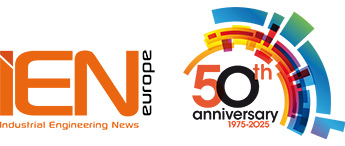QMS International. Health & safety is important in all organisations of all sectors, but for dangerous industries such as manufacturing, engineering and construction, it is paramount.
According to statistics collected by the HSE (Health and Safety Executive), 66,000 manufacturing workers sustain injuries each year, with 15 fatal injuries occurring in 2019/20. Construction is also very hazardous with 61,000 non-fatal injuries occurring annually, with 39 workers losing their lives in 2020/21.
Putting health & safety at the heart of business should therefore be a priority. However, ensuring that the necessary protocols are implemented and maintained properly can often be viewed as coming at the expense of efficiency and productivity.
But organisations don’t have to choose between health & safety and efficiency as priorities – instead, the two can complement each other and lead to all-round stronger business performance.
Driving joint goals
“Health & safety and business efficiency are not diametrically opposed goals,” states Kim Van Deere, IOSH member and field consultant of QMS International. “One drives the other. Stressed, ill or injured people can make mistakes and may need to take time off work or have phased returns, all of which is inefficient. Viewing health & safety and efficiency as aligned goals can therefore lead to better productivity.”
In the post-pandemic world, the benefits of looking after employees’ physical health and their psychological well-being are being more widely realised. “There is less of a ‘let’s tough it out’ attitude,” explains Kim Van Deere. “Employers are beginning to recognise that workers will vote with their feet if they don’t feel that an employer takes care of them, leading to key skills shortages. Presenteeism is also diminishing as both employers and staff recognise that it negatively affects productivity.”
But how can efficiency and health & safety be driven as joint goals?
Tackle mental ill health
Stressed workers or those suffering with other work-related mental illnesses can have a huge impact on efficiency due to workdays lost and errors made. And this problem is growing. Indeed, in its 2019/20 report, the HSE revealed that 51% of new and long-standing cases of work-related ill health were due to stress, depression or anxiety, leading to the loss of 17.9 million working days.
An emotionally protective, calm and productive environment is therefore key for promoting worker well-being and efficiency, which is why it is often a requirement within quality management systems.
To enhance your business’ efficiency (and the health of your employees), you should therefore look at what your business can do to support the well-being your staff and remove psychosocial risks within the workplace. You may want to think about introducing an employee assistant programme, training mental health first aiders, or even implementing the guidance recommended by ISO 45003, a new Standard for managing psychosocial risks in the workplace.
Streamline processes
Bloated procedures not only make your team inefficient but could also make them more complicated to follow, introducing unnecessary risk into the workplace.
Conduct a review of all of your work process, including health & safety procedures, and identify opportunities for improvement. Are there processes that can be streamlined? Are your staff carrying out duplicated tasks? Are your processes actually fit for purpose? Carrying out this review will identify where you can make changes, boosting your team’s efficiency while also ensuring that your health & safety processes keep your staff safe.
Provide training
Competent, informed staff are less likely to become ill or injured while at work. Their knowledge of best practice will also ensure that their tasks are carried out efficiently as well as safely. Establishing competency and communicating effectively are therefore crucial things to consider if you wish to drive both workplace safety and efficiency.
To ensure this, deliver essential health & safety training to both new and retained staff, refreshing it when necessary to make sure competency is maintained and that your legal obligations are met. It is also a good idea to conduct a review of your team’s other skills and fill in any other training gaps.
Training can be supplemented with toolbox talks, which give your team the opportunity to share their learnings and ideas for improvement, whether this relates to health & safety or efficiency.
Investigate automation
The fourth industrial revolution is upon us, and the manufacturing, engineering and construction sectors are in an ideal position to take advantage of digital technology.
Making use of the Internet of Things (IoT), artificial intelligence and automation can be a great way to free up your team to carry out other essential tasks, improve their efficiency with data-driven activity and mitigate health & safety risks.
You may also like to think about how remote working could benefit some of your workers. It may offer them a better work/life balance for improved well-being and will also help you to manage the risks at your main workplace.
Implement best practice
Efficiency and a happy, healthy and safe workforce can all be achieved by implementing best practice. This is where ISO Standards can come into play – each one contains processes that have been determined by global experts to promote business performance.
To maximise efficiency and health & safety in your workplace, you may therefore want to investigate ISO 9001 (quality management) and ISO 45001 occupational health & safety management). The former focuses on implementing processes that promote productivity and consistency, reducing errors and ensuring you get it right first time, every time. The latter can help you to reduce workplace risks and the likelihood of injury and illness for better productivity.
Whatever processes you decide to implement, remember that by prioritising health & safety and demonstrating this focus to your workforce you can help to build trust with your team, supporting their morale and loyalty for maximum efficiency.
Claire Price, QMS International






























































